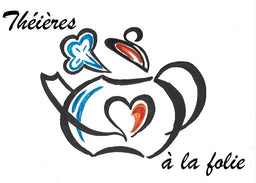Summary :
A bit of history: It dates back to 1893 when a certain German chemist Otto Schott developed borosilicate glass which he marketed through his foundation "Schott AG" under the name Duran.
In 1908, the research director Eugène Sullivan developed for the company "Corning Glass Works" a borosilicate glass with a low expansion rate, which could withstand thermal shocks with less damage called Novex. Initially, Novex was used mainly in lantern globes and in batteries. Then with Jesse Littleton also at the Corning Glass Work they understood the interest of borosilicate glass in the world of cooking, and the first dishes were therefore developed in Novex. Later, the products gained prominence for mass consumption, borosilicate was improved in composition, and the glass was marketed in 1915 under the name Pyrex. Little by little were introduced glasses, bowls, dishes for the oven… Then for the flames (those were bluish because of the added magnesium sulphate)
So, you have understood, Pyrex is a brand name like “Frigidaire” was, that is to say lexicalized, it has entered common language and often designates a product which is not of the Pyrex brand. However, its domain remains that of oven dishes and cooking pots because they are very resistant to thermal shock. Mirrors, stove windows, laboratory glassware, etc. because it is a heat-resistant borosilicate glass with a low thermal expansion rate.
Borosilicate is obtained from silicon dioxide and sodium borate. Its coefficient of thermal expansion is very low, which is what gives it its resistance qualities in all conditions. This type of glass is lighter than ordinary glass and yet resists thermal and chemical shock, heat and cold.


